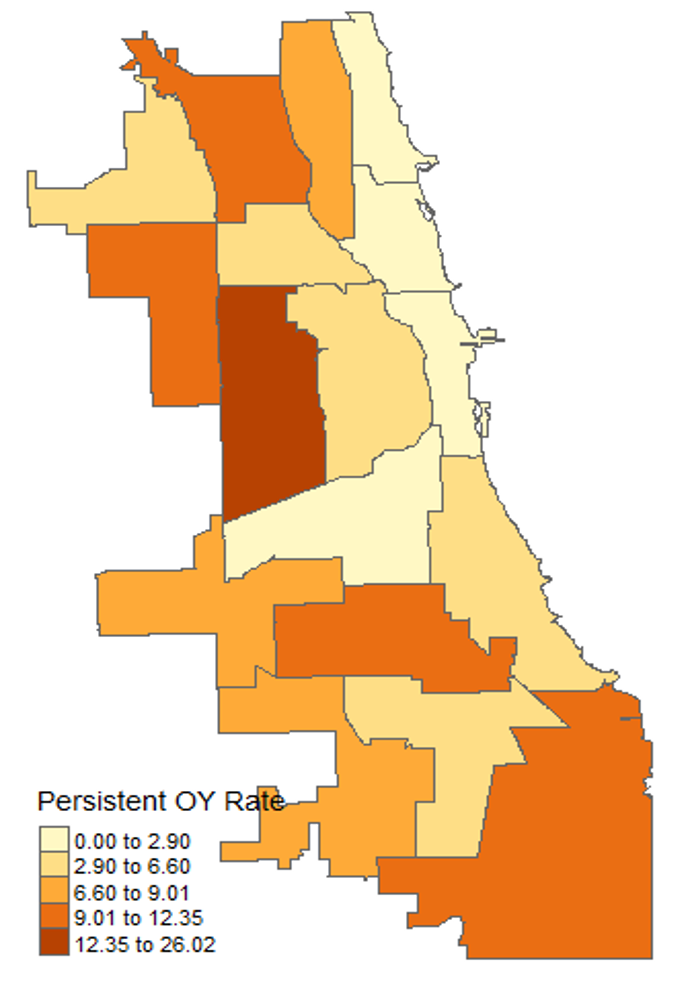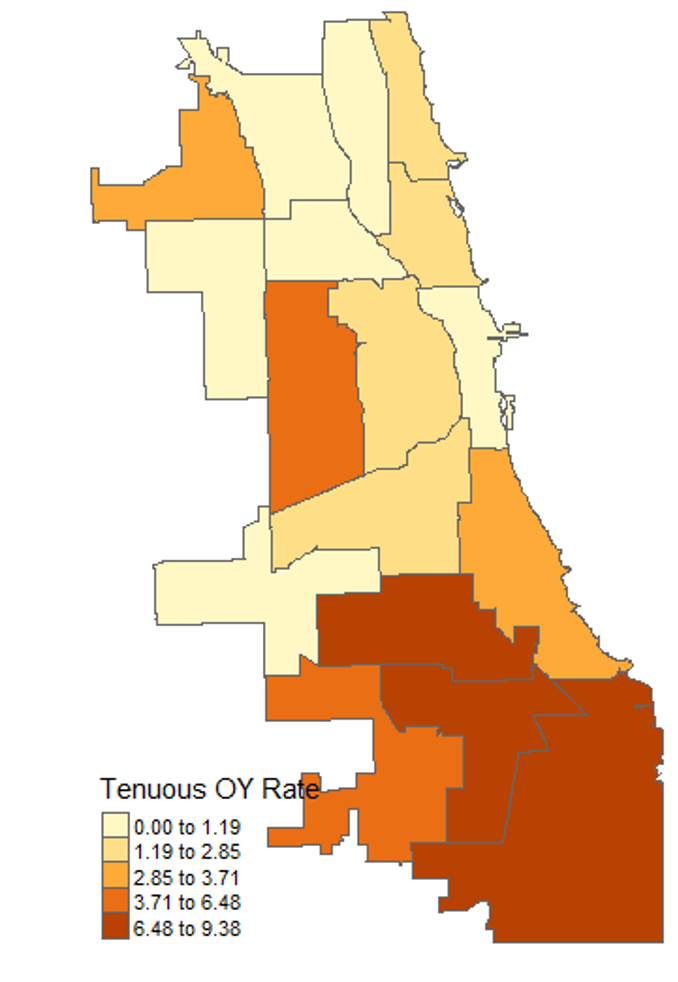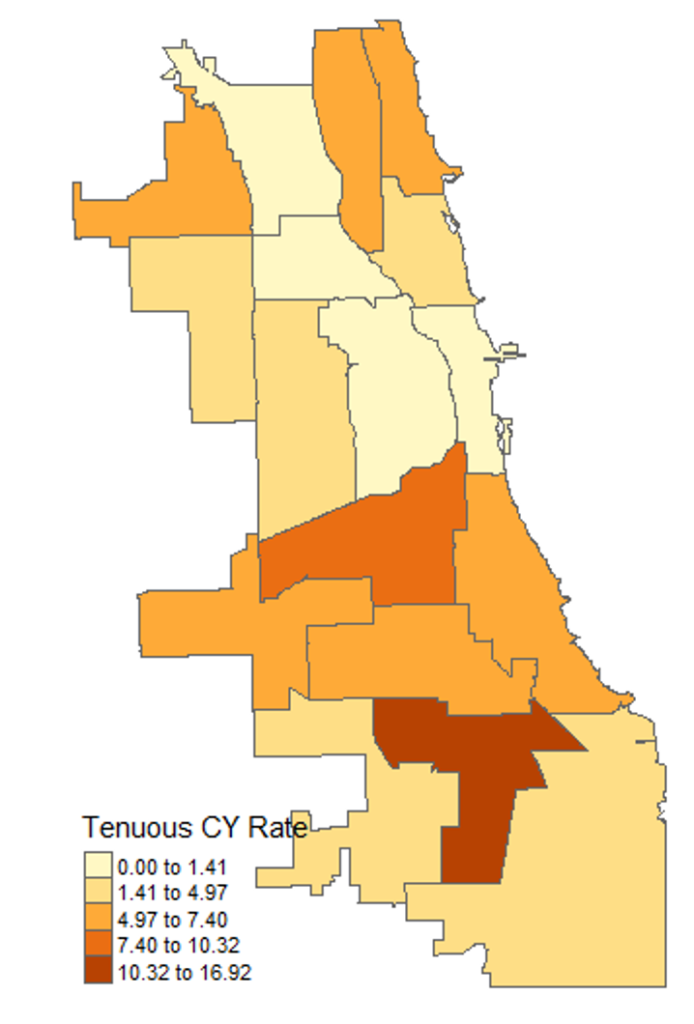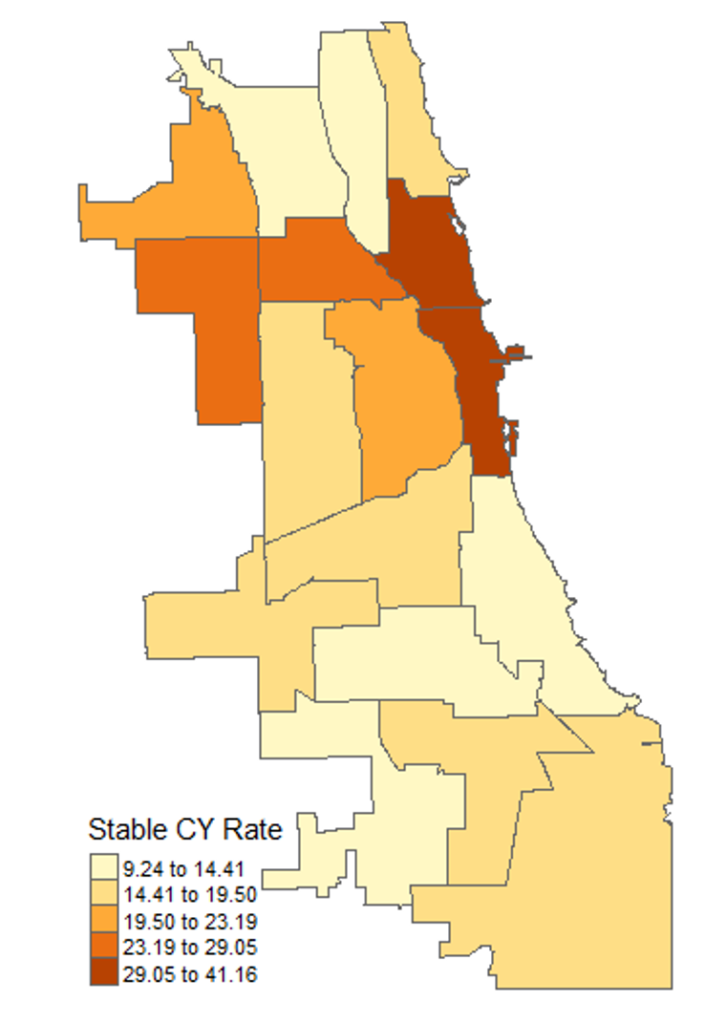Through the years, Thrive Chicago’s Data and Learning Team has examined increasingly refined data from the U.S. Census and other sources to better understand the unique needs of Opportunity Youth (OY)—young adults ages 16 to 24 who are out of school and out of work. According to data from the U.S. Census’ American Community Survey, Chicago had roughly 37,000 Opportunity Youth in 2019, and since its founding, Thrive has been working to reduce the size of the OY population and their rate of disconnection.
A key component of this work is understanding the nuances and differences among OY themselves, and between OY and their more connected peers. In April, we described the four groups that make up Chicago’s Opportunity Youth population: Persistently Disconnected Youth, Tenuously Disconnected Youth, Tenuously Connected Youth, and Stable Connected Youth. Understanding the nuances among these groups provides Thrive’s Opportunity Youth Action Team with insights to refine our community-based strategies.
Persistently Disconnected Youth
22,883
The number of youth ages 16-24 in Chicago who are out of work, out of school and have not worked in the past five years.

Tenuously Disconnected Youth
10,170
The number of youth ages 16-24 in Chicago who are out of work, out of school and have worked in the past year.

Tenuously Connected Youth
15,927
The number of youth ages 16-24 in Chicago who are not in school and who work 25 hours per week or fewer.

Stable Connected Youth
62,000
The number of youth ages 16-24 in Chicago who are not in school and who work more than 35 hours per week.

Conclusion
Our analysis highlights the importance of tailored supports for young people. The broad variation within Opportunity Youth shows that external factors and policy changes may have unique effects on these distinct populations. The reality is that disconnection is a continuum, as is connection, and Opportunity Youth are a diverse group, with varying backgrounds and needs related to employment, education, race, geography, and gender.
Activating data and research is among Thrive’s capabilities, and a core aspect of Collective Impact, the social impact theory that guides the organization.





